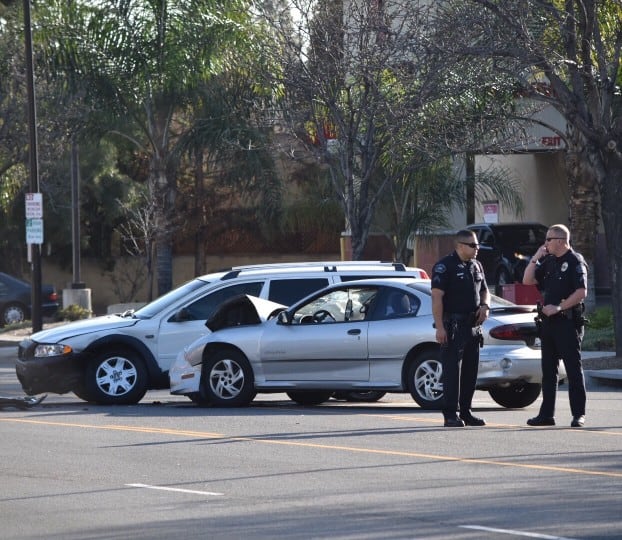Posted At: Oct 06, 2023 - 484 Views

The best time to build your court case or insurance claim follows in the moments after a car accident. Even if you believe the incident is minor, you should still collect information. The longer you wait, the more challenging it becomes to prove your version of events.
A car accident lawyer uses photos, videos, and official documents to build your case. The more high-quality proof you have, the better your chances are of emerging victorious from the courtroom or the negotiating table.
Here are some considerations when gathering evidence after a car accident:
Do Not Admit Fault
Whatever you do, do not admit fault. Even if it appears obvious that you are in the wrong, saying you caused the accident undercuts your case. You can still be civil and apologetic without admitting wrongdoing.
This advice applies when you are talking with the other driver and the police. You’re free to tell your side of the story to an accident attorney, but resist the temptation to disclose fault to other parties. You should remain forthcoming and truthful with authorities, while keeping your perspective.
Meeting the Burden of Proof

Arizona law requires plaintiffs to bear the burden of proof during court cases. That means you must prove the other party was at-fault for the accident. The two relevant standards are a “preponderance of the evidence” and “clear and convincing evidence.”
A preponderance of the evidence means the facts are more likely true than not. For instance, you claim the other driver merged into your lane without signaling, which resulted in a rear-end collision. You have dash-cam footage showing the merger, while the other driver has their passenger’s eyewitness testimony. Your evidence meets the standard for a preponderance of the evidence, making you likely to collect compensation.
You need clear and convincing evidence to collect punitive damages. The burden of proof occurs if the other driver deliberately tries to harm you, such as an intentional sideswipe. Clear and convincing evidence comes with a higher standard than a preponderance of the evidence, requiring a “high probability” of truthfulness rather than a “more likely than not” scenario.
Gathering Evidence from the Scene
Photos and videos are your best friend when gathering evidence after a car accident. Once you exchange contact and insurance information with the other driver, take your time documenting the scene. Here are a couple of things to record:
- Bodily harm or injuries
- Damage to their car
- Damage to your car
- Debris
- Property damage
- Skid marks
- The other car’s make, model, and color
- The weather
Collect evidence so you can recreate the scene later. Take photos and videos from multiple angles as you record different locations one by one. Don’t forget to take a picture of any injuries, no matter how minor they may appear.
Information to Get from Drivers and Witnesses
All drivers in Arizona are legally required to carry a driver’s license and proof of insurance. Drivers must share these documents along with their contact information following an accident. If a driver attempts a hit-and-run, the courts can charge them with a felony and a mandatory jail sentence.
Here are the essential pieces of information you should get from the other driver:
- Name
- Driver’s license number
- Insurance information (carrier and policy number)
- License plate number
Pedestrians near the crash may see the accident and testify to your account. If you find any eyewitnesses that support you, get their side of the story and their contact information. Their testimony can bolster your claims and contradict the other driver if they try to shift the blame to you.
Getting Police Reports and Other Documents
If the police show up at the accident, ask them to make an accident report. The document serves as a public record and will contain who the officer believes is at fault. While an accident report won’t make or break a case, it’s still a persuasive piece of evidence.
Remember that evidence doesn’t start and end with a car accident. Gather documents related to car repairs and medical bills, including any vehicle maintenance leading up to the crash. If the other driver totals your car, you can earn a higher replacement value after proving these upgrades.
You’re better safe than sorry when gathering evidence after a car accident. Create a log of your medical and rehabilitation appointments, including your physician, what kind of treatment you received, and the cost. If you do not actively journal your recovery, you can always ask your doctor later for a copy of your medical records.
Meet and Confer
Many jurisdictions in Arizona require you to reconcile with the other driver following a car accident. You must make a good faith effort to resolve the issue before going to court. The informal meeting gives both parties a chance to avoid the time and effort that comes with a formal lawsuit.
You can meet in person, on the phone, via text, or through video chat. The court wants to see that you tried to reach a resolution during the discovery phase. Make sure to document your meeting for the court.
Hire a Professional to Help
If you’ve been in an accident and are feeling overwhelmed with gathering evidence, Top’s Injury Law Group PLLC is here to help. Our car accident attorneys can guide you through every step of the process. For a free consultation, contact us today at (480) 470-2299.
